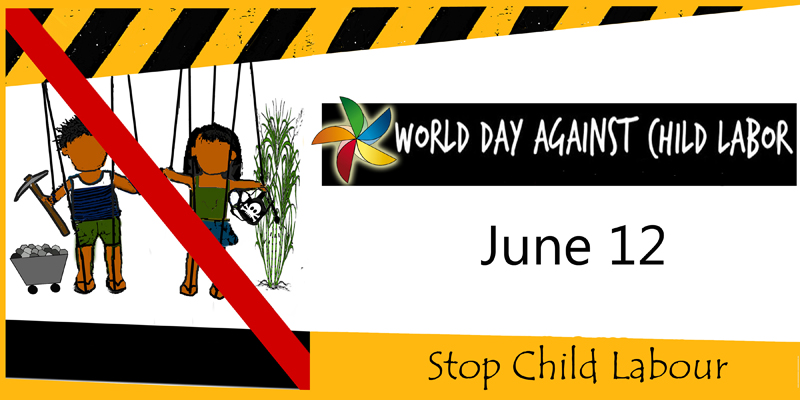Even in today’s time and age where we are surrounded by advanced communication and technologies, that enable us to know everything happening in the farthest corners of the world, we allow the exploitation of children in the name of child labour. The international Labour Organization defines Child Labour as “work that deprives children of their childhood, their potential and their dignity, and that is harmful to physical and mental development.” Child labour is a result of extreme poverty that pushes families to encourage kids to work, and lack of opportunities for education. It takes away from these children a normal childhood and often affects their physical and mental health conditions irreversibly.

Today, more than 200 million children in the world work as child labourers, out of which an estimated 180 million are engaged in hazardous work. In order to highlight the growing rate of child labour across the globe and the impact it has on the lives of so many innocent children, the International Labour Organization marked 12th June as the World Day Against Child Labour. Through this day, the ILO aims at bringing together international organizations, NGOs, governments and members of the civil societyto unite and commit to resolving the problem of child labour.
This year, World Day Against Child Labour is aimed at protecting children from labour in the wake of global conflicts and disasters. Conflicts and disasters not only kill and physically hurt the population, but also displace the lives and livelihoods of people leaving them in a state of poverty and starvation. Children are often worst hit by disasters and conflict and are also displaced from their families or forced to take refuge in other countries, making life and survival for them as children extremely difficult. The current situation in Syria and the numerous pictures of children suffering highlight the intensity of the impact that conflicts have on children. Children who are displaced from their homes and families as a result of these disasters and conflicts are often left with no choice but to turn to labour opportunities to fend for themselves and survive.
As explained by the renown Child Rights activist, Kailash Satyarthi, child labour perpetuates poverty, unemployment, illiteracy, population growth, and other social problems that give rise to a vicious cycle. Governments, NGOs and members of the civil society need to join hands to ensure that children are protected from jobs that interfere with their health, safety, education and conditions that push them to take up jobs. There should also be proper implementation of policies and laws that hold employers responsible for employing children below the age of 14 years, like the Child Labour (Prohibition and Regulation) Act of the Indian Constitution. The Director General of the ILO, Guy Rider reiterates the need to act upon the problem of child labour immediately and aggressively by saying-“The 2030 Sustainable Development Agenda reaffirms the goal of ending child labour. Acting together, it is within our means to make the future of work a future without child labour”






